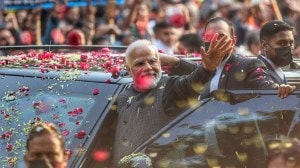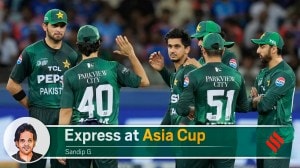Juniors come of age, or is it the other way round?
India's maiden title at the Junior Asia Cup hockey is an achievement which can give a huge boost to the game at the grassroots level in the ...

India’s maiden title at the Junior Asia Cup hockey is an achievement which can give a huge boost to the game at the grassroots level in the country. But at the same time, there is a big chance that the win won’t bring any gains to India’s performance at the highest level. Simply because the team that won the title actually comprises of players who are part of the India B team — basically the back-up lot for the main team since selection of hockey teams are made from a pool of at least 24 players.
For the 2004 Olympics, Australia is preparing with 24 players and the final squad of 16 will be decided later. On the other hand, the Indian team has been struggling to find suitable replacements for the first 11. Even chief coach Rajinder Singh complained recently that he did not have enough bench strength in the recent Australia tour, where India finished last out of four nations.
Incidentally, the team that played in the JAC consisted of eight players who have represented the Indian team at some time in the last two years:
• Forward Tushar Khandekar played in three major meets, but he failed to impress and was demoted to the junior level
• Captain Sandeep Michael’s job application mentions he is 24, when the bar is 21 for the junior World Cup and Asia Cup
• Midfielder Vivek Gupta started his career in the domestic circuit in 1994, when he was at the Under-14 level with some of the present members of the current senior team
There are high monetary rewards and lucrative jobs at stake in Indian hockey, much more than in Europe or Australia. For the juniors’ triumph, the team is entitled to around Rs 20 lakh from the sports ministry. The federation too can claim achievement on paper and can expect increased government grants and money from sponsors.
The narrow mindset — looking at short-term gains — has already created havoc in Indian hockey. Logically, the players who were in the 1997 JWC (India won silver) should have graduated to winning higher laurels for the country. But India’s position suffered in the next phase. They finished ninth at the 1998 World Cup, seventh in the 2000 Olympics, and tenth at 2002 World Cup.
A few years ago former Indian captain Pargat Singh had made a plea to the Indian Hockey Federation to stop this self-damaging practice but it was ignored.
At least the IHF can make a fresh beginning now for the 2005 Junior World Cup (they get a direct berth for this win). They could also make the juniors’ selection process more sensible and start looking at the future.
As far as neighbours Pakistan are concerned, there is hardly a proper grooming system at the junior level, and like in most other sports, there is abundant natural talent. In Europe and Australia most of the top players have an impressive record over a long period of time, which is proof that they are groomed according to their age.
Australia’s young star Jamie Dwyer, who played the JWC in 2001, is today among the best centre forwards in the world. As a member of the current Indian team told The Indian Express, ‘‘Our players (because of no restriction) reach their peak when they are playing at the junior level. Then when they get selected for the seniors, they reach a plateau and then it is downhill for them.’’
The player adds, ‘‘The European teams genuinely follow the age-rules and no wonder you can see them improve with time.’’ Precisely the flaw with the Indian system.
Photos


- 01
- 02
- 03
- 04
- 05





























